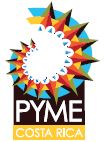Culture


The Key to your Adventurous Travel!
T (506) 2296-1024
Email: viatur@ice.co.cr
Viatur Travel Services
Rohrmoser, San Jose Costa Rica 394-1000
Costa Rica's Culture
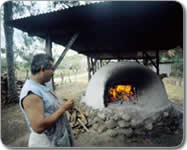
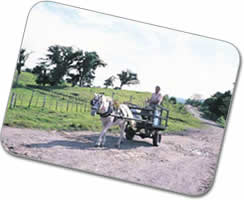
.jpg)
.jpg)
.jpg)
Language & Culture
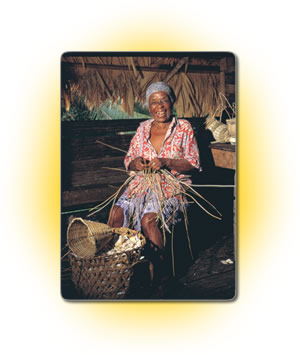
Ticos, as the Costaricans are also called, are friendly and hospitable.
They appreciate the interest you show in their country and are ready to receive you with open arms.
During your Costarican adventure you will get to know both nature and culture of this special country.
Language
Spanish is the official language, although English is widely spoken.
To help you on the way, here we show some common expressions that can make a world of difference in your Costa Rica experience.
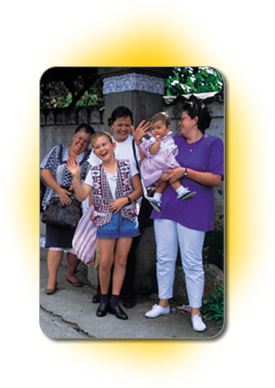
Buenos días: Good morning
Buenas tardes: Good afternoon
Buenas noches: Good night
Hola!: Hello!
Hasta luego: See you later!
Gracias: Thank you
¿Cómo está?: How are you?
Bien, ¡gracias!: Fine, thank you!
Pura Vida
Pura Vida, Costa Rica’s most typical expression, will serve in almost every occasion. Literally meaning ‘Pure Life’, interpretable as meaning ‘great’, it is commonly heard on the streets.
 Food is good, and tends to be more savory than spicy. Commonly used ingredients are rice, beans, sweet plantains, corn tortillas, fish, beef and chicken.
Food is good, and tends to be more savory than spicy. Commonly used ingredients are rice, beans, sweet plantains, corn tortillas, fish, beef and chicken.
Costa Rica offers a variety of typical dishes which have to be tried at least once before returning home.
Most of these dishes are served in the so called ‘soda’s’, small, often family-run places to eat.
Here we introduce to you just a hint of Costa Rica’s cuisine.
Buen Provecho!
Gallo Pinto
This typical Costa Rican breakfast, made of fried rice and beans in a combination with sweet pepper, onions and spices and served with eggs, warm tortillas and natilla (sour cream), will provide you with the energy you will need for a day of adventure. Enjoy it with a hot steaming cup of Costa Rican made café con leche, coffee with milk.
.jpg)
Casado
Casado, the meal of the married man. This savory plate consists of rice, beans, a piece of beef, chicken or fish, fried ripe plantain and salad.
Ceviche
Costa Rican sushi! Raw fish marinated in lemon juice, spiced up with cilantro. A delicacy for fish lovers!
Tamal
This tasty dish, made of cornmeal, pork, chicken or beef and wrapped in a banana leaf, is definitely worth a try!
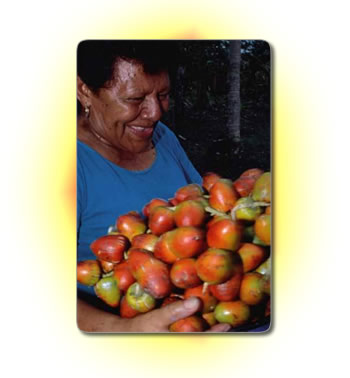 Snacks
Snacks
Some typical Costa Rican snacks to enjoy with our nationally brewed beer are chicharrones (crispy fried pork rinds), patacones (mashed fried plantain) and pejibaye (a type of boiled palm fruit) served with mayonnaise.
Batido
This drink is a real treat when you’re in for something sweet without artificial ingredients. It is freshly made for you of fresh fruits such as papaya, banana, blackberries, watermelon or pineapple, with milk or water added to be blended with ice into a tasty smoothie.
Pipa
Right from the (green) coconut, you drink this delicious natural thirst-quencher with a straw.
Tipping:
Restaurants - 10% tip is appropriate; most restaurants will add it to your bill.
Taxies - usually no tip is given.
Holidays & Festivities -
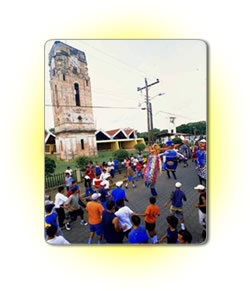
In Costa Rica certain holidays are celebrated that are not common in other countries. During these days, most shops and offices are closed and public transport is limited to a minimum.
January 01 - New Year's Day
April 11 - Anniversary of the Battle of Rivas
Today the victory in Santa Rosa and Rivas is remembered. In 1856 Juan Santamaría, nowadays Costa Rica’s national hero, contributed decisively to defeating the army of William Walker, who wanted to make a slave state of Costa Rica. By burning the enemies’ barracks he saved Costa Rica from this fate.
See History
March/April - Easter week: Semana Santa
During this week you can witness processions in which statues of Christ will be carried around, followed and surrounded by a crowd.
Thursday and Friday are free days and most shops and offices will be closed.
May 01 - Labor Day
July 25 - Guanacaste Annexation
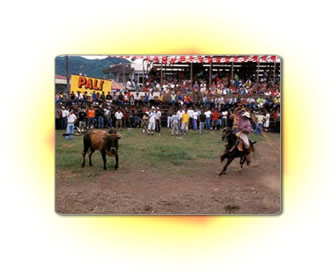 In 1824, the province of Guanacaste decided to join Costa Rica instead of Nicaragua. This is celebrated every year with bullfights, folk dances and fiestas.
In 1824, the province of Guanacaste decided to join Costa Rica instead of Nicaragua. This is celebrated every year with bullfights, folk dances and fiestas.
August 2 - Our Lady of the Angels
Cartago, former capital of Costa Rica and home of the Basilica of Our Lady of the Angels. On August 2nd, 1635, an indigenous girl found a little statue in the forest in the form of the Black Virgin. She brought it to the priest, who put it in a box. The next day the statue had disappeared from the box and was found again in the very same place where the girl had found it the day before. Even though the statue was locked away, again and again it disappeared from its place and returned to the forest. A cathedral was then built on that location and until now it still shelters the statue.
Annually, people from as far away as Guatemala walk the pilgrimage to honor ‘Our Lady of the Angels’ in
Cartago on the 2nd of August. 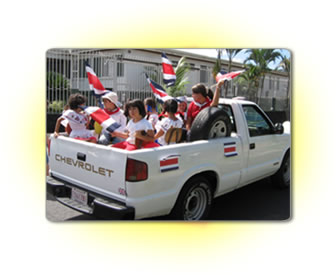
August 15 - Mother's Day
September 15 - Independence Day
On September 15, 1821, Central America gained its independence from Spain. In Costa Rica this is celebrated every year with parades – with elementary and high school students in traditional attire – and a lot of typical Costa Rican food.
See History
December 25 – Christmas Day
Special Events
Costa Rica has a number of special events, which return on an annual basis. The following is just a selection of the numerous yearly festivals and activities.
| Fiestas del Fin del Año (end of the year, week-long festivities): December-January |
|
| Orchid Show, Cartago: February-March |
|
| Dia del Boyero (Day of the Oxcart Drivers), San Antonio de Escazú: March (middle) |
|
| National Craft Fair, San José March (middle) |
|
| International Arts Festival March |
|
| Green Turtles' nesting season in Tortuguero National Park July-September |
|
| Arrival of Pilgrims, Cartago August |
|
| Carnival Week, Puerto Limón October |
|
| Leather-Back Turtles' nesting in Tamarindo (Pacific Coast) November-February |
|
| Arts/ Lights Festival December |
All pictures belong to Viatur private collections and are subject to ©.
Powered by Programática de Costa Rica S.A. © 2016. All rights reserved.

